Outperformance Ain’t Alpha
If you can explain it, you can replicate it more cheaply
August 2022. Reading Time: 10 Minutes. Author: Nicolas Rabener.
SUMMARY
- Outperformance and alpha are not the same
- One is the difference from a benchmark, the other is the unexplained return
- A contribution analysis helps understanding the return drivers
INTRODUCTION
Almost 90% of US drivers rate themselves safer and more skillful than average. Obviously, such perceptions do not reflect reality. After all, nine out of 10 people can’t all be above average. Nevertheless, the results are compelling: They illustrate an innate human tendency to overrate our own talents and skills and underrate those of others.
Equity mutual fund managers likely have a similarly distorted view of their ability to generate alpha by outperforming the stock market. Otherwise, how would they justify their jobs?
But perhaps we’re missing the point. Maybe most drivers do drive safely and most fund managers outperform, with only a very few accounting for a disproportionate share of traffic tickets and accidents and major capital losses, respectively. Unfortunately not. The majority of fund managers do underperform their benchmarks: Only 17% of US large-cap mutual fund managers beat the S&P 500 over the last 10 years, according to the latest S&P SPIVA Scorecard. Moreover, there is no consistency among those few who did outperform. This all implies that successful manager selection is almost impossible (read Alpha Generation: The Search for the Unexplainable).
But research shows that factors rather than skill explain out- and underperformance. Therefore, outperformance and alpha are not exactly the same thing. So, how do we explain the difference?
OUTPERFORMANCE
While fund managers emphasize their ability to create alpha for clients, fund factsheets compare their performance to a benchmark. For example, the Invesco S&P 500 Pure Value exchange-traded fund (ETF, RPV) generated a return of 0.7% over the last 12 months, while its benchmark, the S&P 500, yielded –10.2%. The S&P 500 Value index might be a better point of comparison for RPV, but relative to the broad index, the ETF has delivered significant value — pun intended — to its investors.
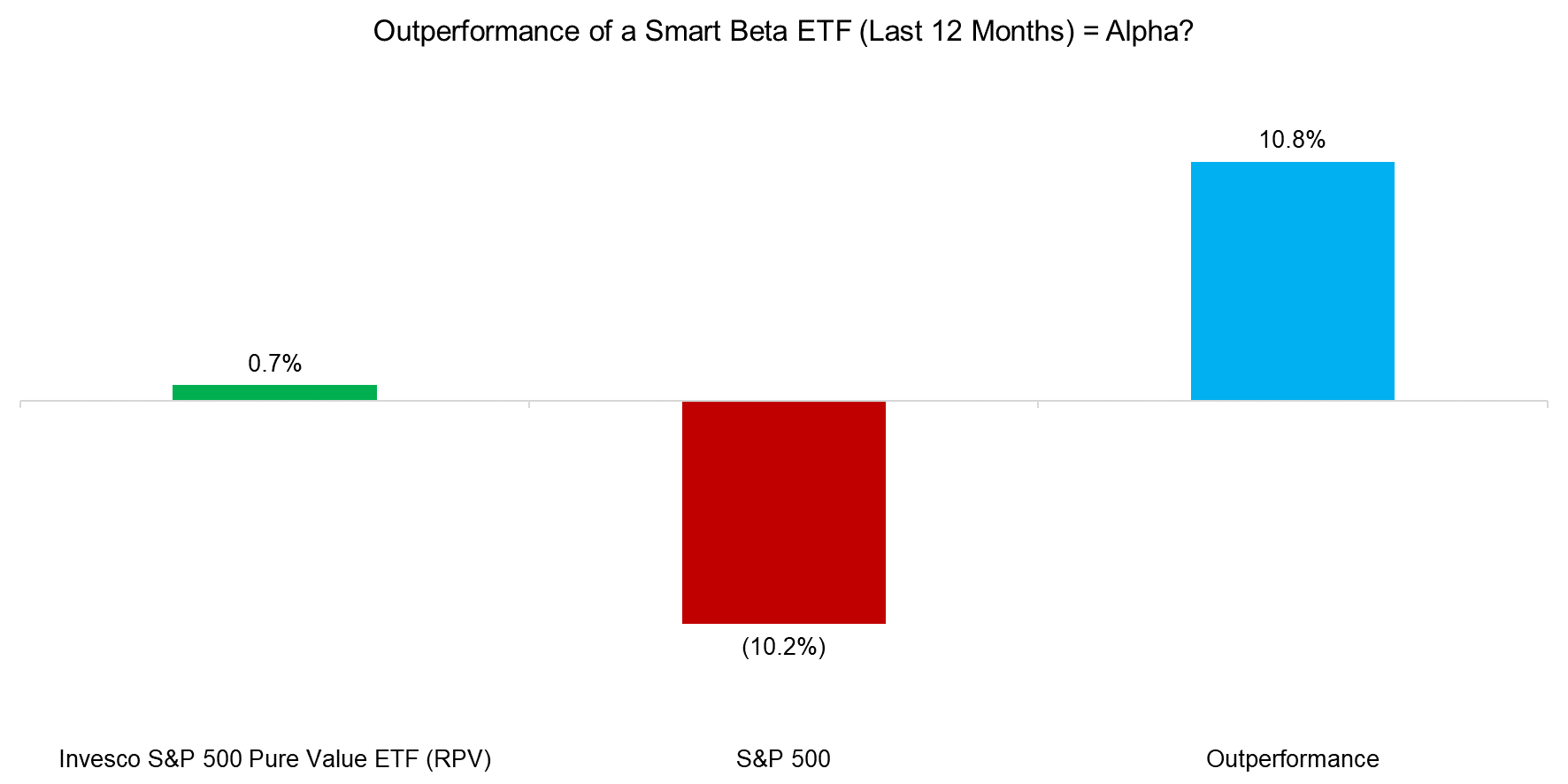
Source: FactorResearch
FACTOR EXPOSURE ANALYSIS
Since the RPV ETF selects roughly the 100 cheapest S&P 500 stocks, it is a value-focused strategy. A regression analysis with a one-year lookback validates this. RPV has high betas relative to the S&P 500 — it is a long-only strategy — as well as to the value and quality factors.
The value factor exposure and the quality factor negative beta are both intuitive as cheap companies tend to rank poorly on quality metrics. Stocks trading at low valuations tend not to be highly profitable and often have excessive leverage or other issues (read Factor Exposure Analysis 101: Linear vs Lasso Regression).
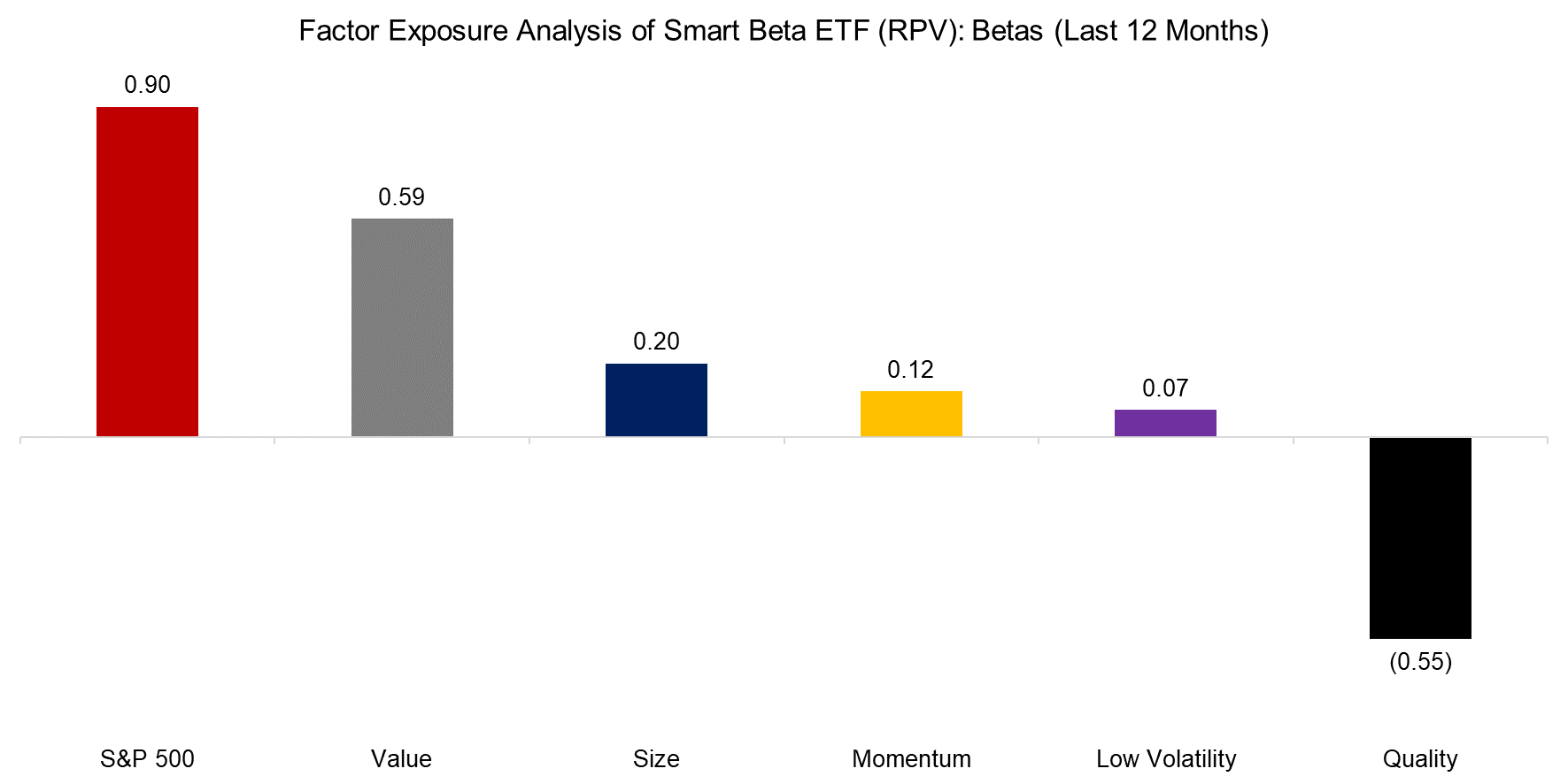
Source: FactorResearch
CONTRIBUTION ANALYSIS
With the factor betas, we can create a contribution analysis. RPV had a high beta compared to the S&P 500 — 0.90 — which was down 10.2% over the last 12 months. Therefore, the broad market contributed –9.1% to RPV’s returns. Save for the value factor, which contributed 12.5%, other equity factors had a marginal impact.
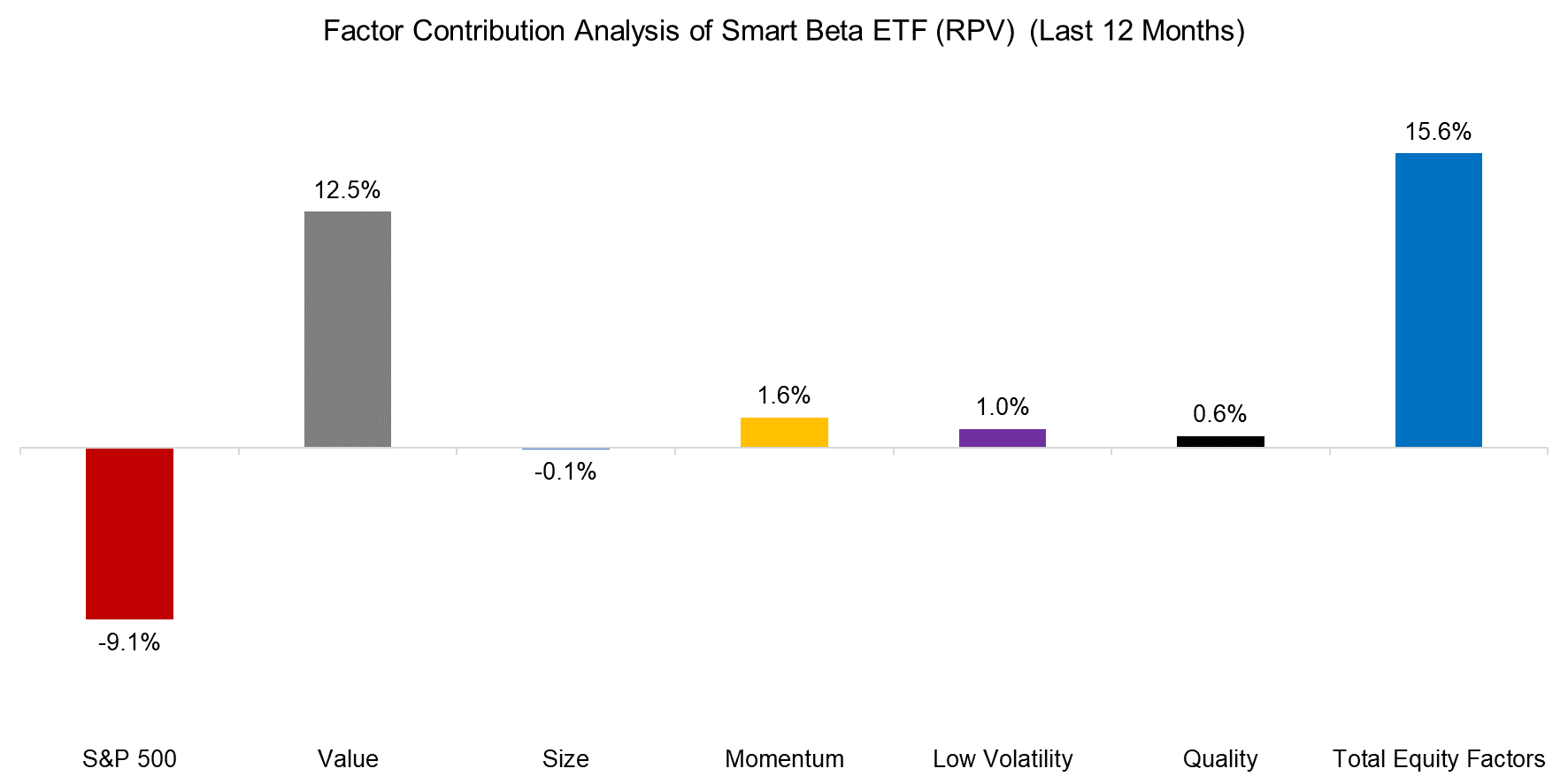
Source: FactorResearch
ALPHA CALCULATION
Since we know how much the stock market and equity factors contributed to RPV’s performance, we can also calculate the residual. Theoretically, this represents the manager’s skill, or whatever market beta and factors are not responsible for. Stated differently, it is the alpha.
For RPV, the alpha was negative. But how can the alpha be negative when the ETF outperformed its benchmark? The implication is that the value-focused strategy was implemented poorly. Management fees, market impact, and transaction costs must also be taken into account. While there will always be slippage, that only explains a fraction of the –5.7% result.
Based on this analysis, investors would have been better off avoiding RPV and buying the S&P 500 and the factor exposures through a zero-cost ETF and risk premia indices, respectively.
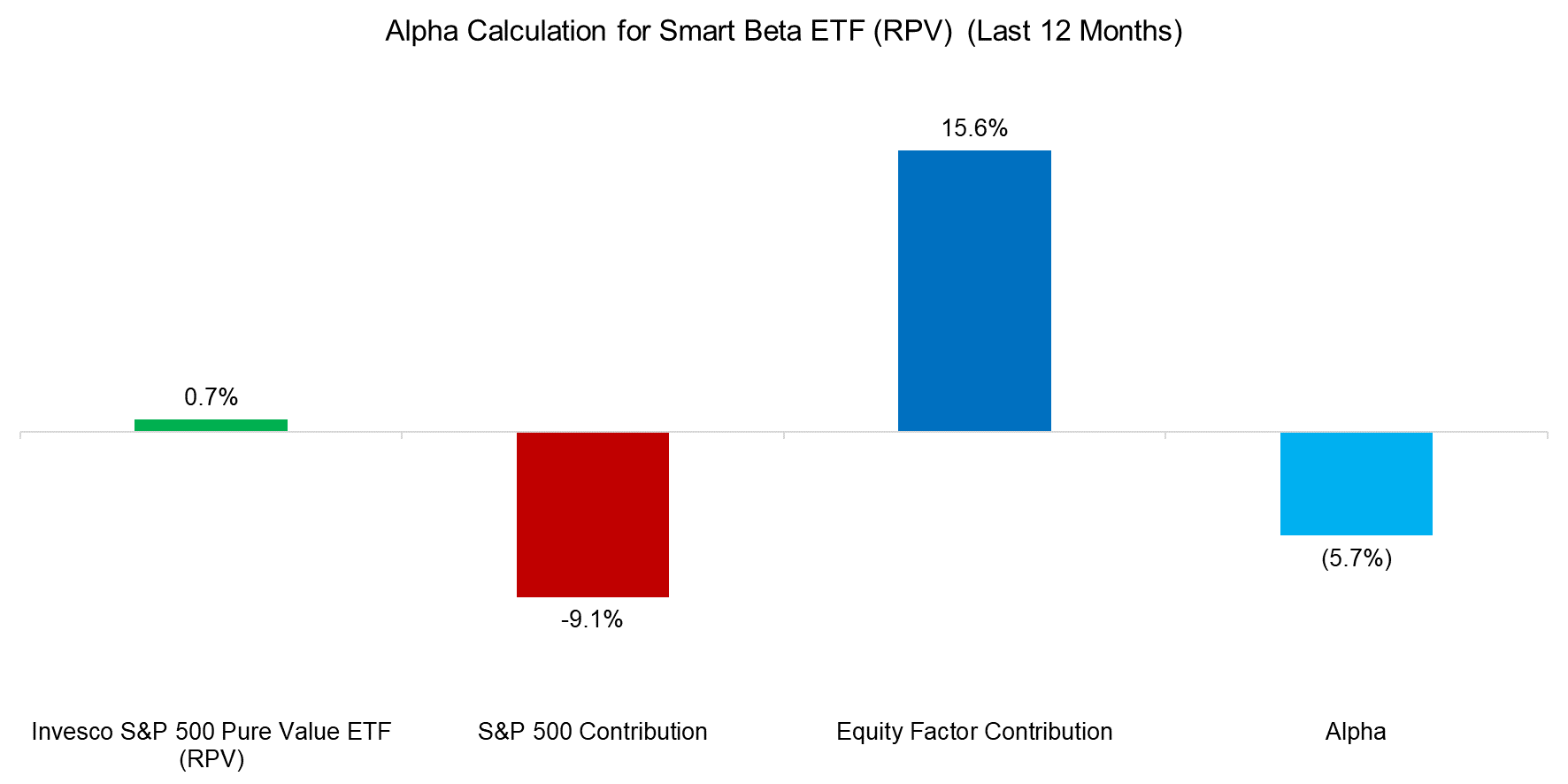
Source: FactorResearch
The alpha calculation may be a little confusing since RPV is a smart beta ETF that provides exposure to the value factor and we’re using a factor exposure analysis to measure the contributions. But we can replicate this approach with Fidelity Contrafund (FCNTX), one of the most well-known equity mutual funds. FCNTX has a long track record going back more than 40 years and manages close to $100 billion. The fund holds a concentrated equity portfolio that is dominated by Amazon, Microsoft, Apple, and other growth stocks.
But over the last 12 months, this strategy hasn’t worked well either: FCNTX has declined by more than 20% due to beta and factor exposure. According to the contribution analysis, the S&P 500 and equity factors can’t fully explain the negative performance, that is, alpha was negative. As such, the fund manager must take responsibility for at least some of the losses.
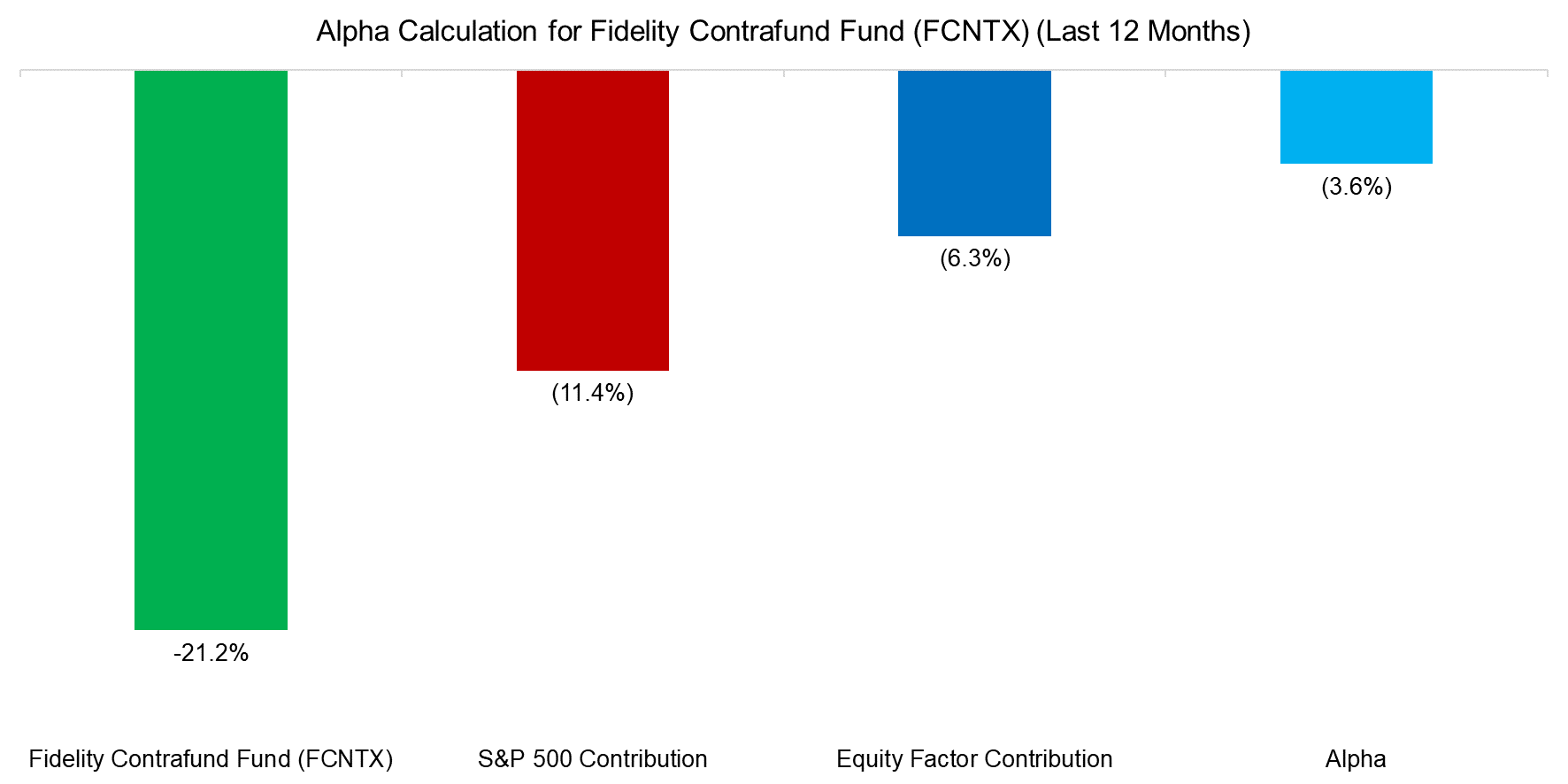
Source: FactorResearch
OUTPERFORMANCE VERSUS ALPHA
By running contribution analyses for 13 US stock market equity mutual funds and ETFs, we can demonstrate the significant difference between outperformance and alpha. In only one case — the Davis Select US Equity ETF (DUSA) — were outperformance and alpha almost identical at –0.5%. The ETF does have exposure to factors, but the contributions netted themselves off. That means the loss can only be attributed to fees or lack of skill.
As for the ARK Innovation ETF (ARKK), much of the recent criticism may be overstated. According to our calculations, Cathie Wood, ARKK’s fund manager, has created alpha. The ETF is down 61.8% over the last 12 months, but the market accounted for –17.7% of that and factors for another –53.0%. So there was 8.9% of alpha. ARKK is highly concentrated with a few growth names — Tesla, for example. This results in betas to the S&P 500 of 1.7 and to the value factor of –1.35. Since factor exposure analysis reveals all this, investors have only themselves to blame if such bets go south.
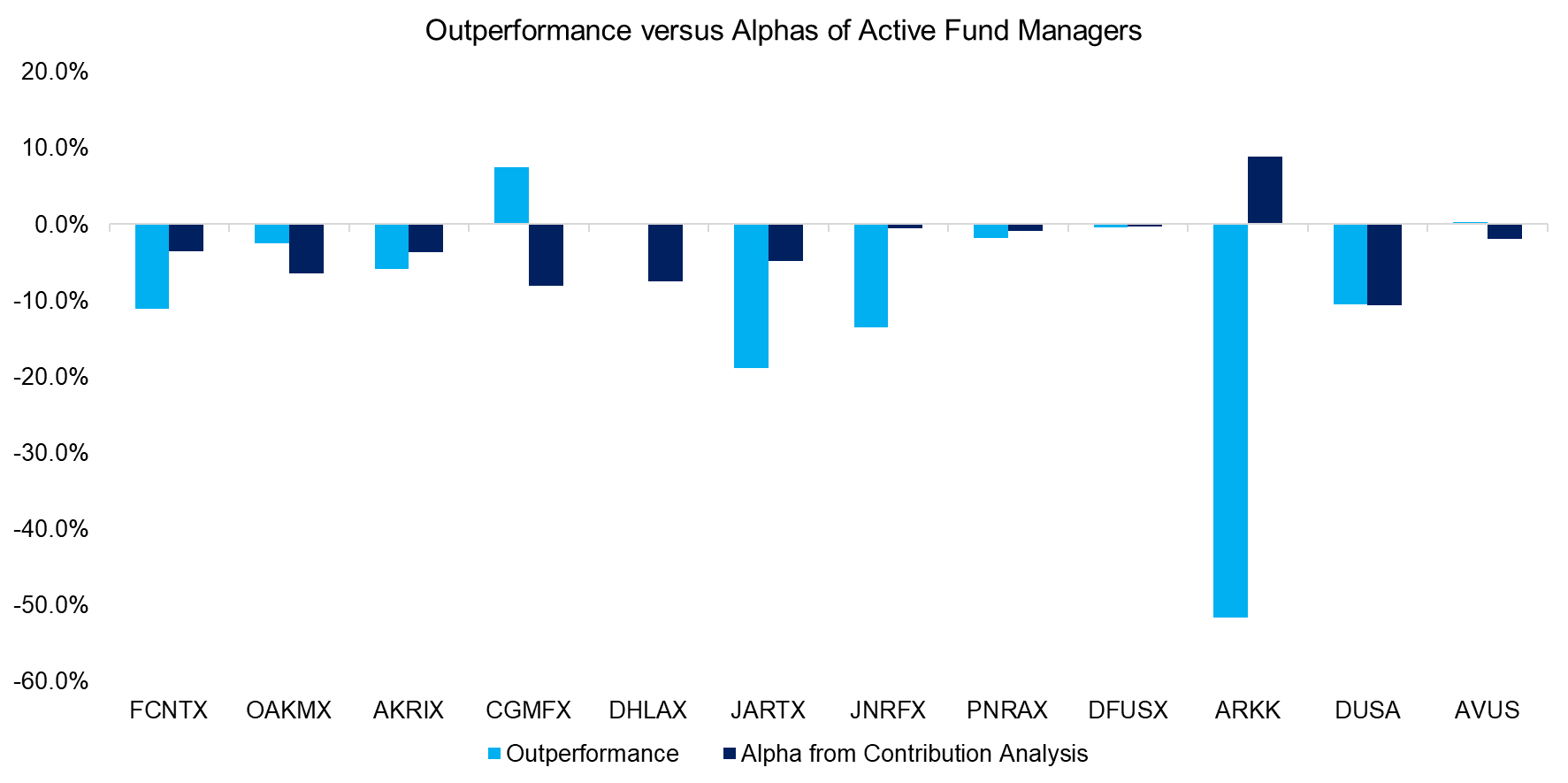
Source: FactorResearch
DIFFERENT INPUT, DIFFERENT OUTPUT
Though contribution analysis is the most meaningful alpha calculation methodology, the data that is used matters. So far, we have employed FactorResearch factors. These apply industry-standard definitions for stock selection and market capitalization constraints for defining the stock universe. They also include transaction costs and are constructed beta-neutral.
With Dow Jones and Fama and French data, the alphas vary somewhat. The three-factor model from Fama and French yields the largest difference because only the market, size, and value factors come into play.
Factor definitions matter and should be as practical as possible. For example, the universe of stocks in Fama and French factors include illiquid small caps that many investors don’t have access to, lack transaction costs, and are constructed dollar-neutral. To benchmark a product to such factors sets unrealistic expectations.
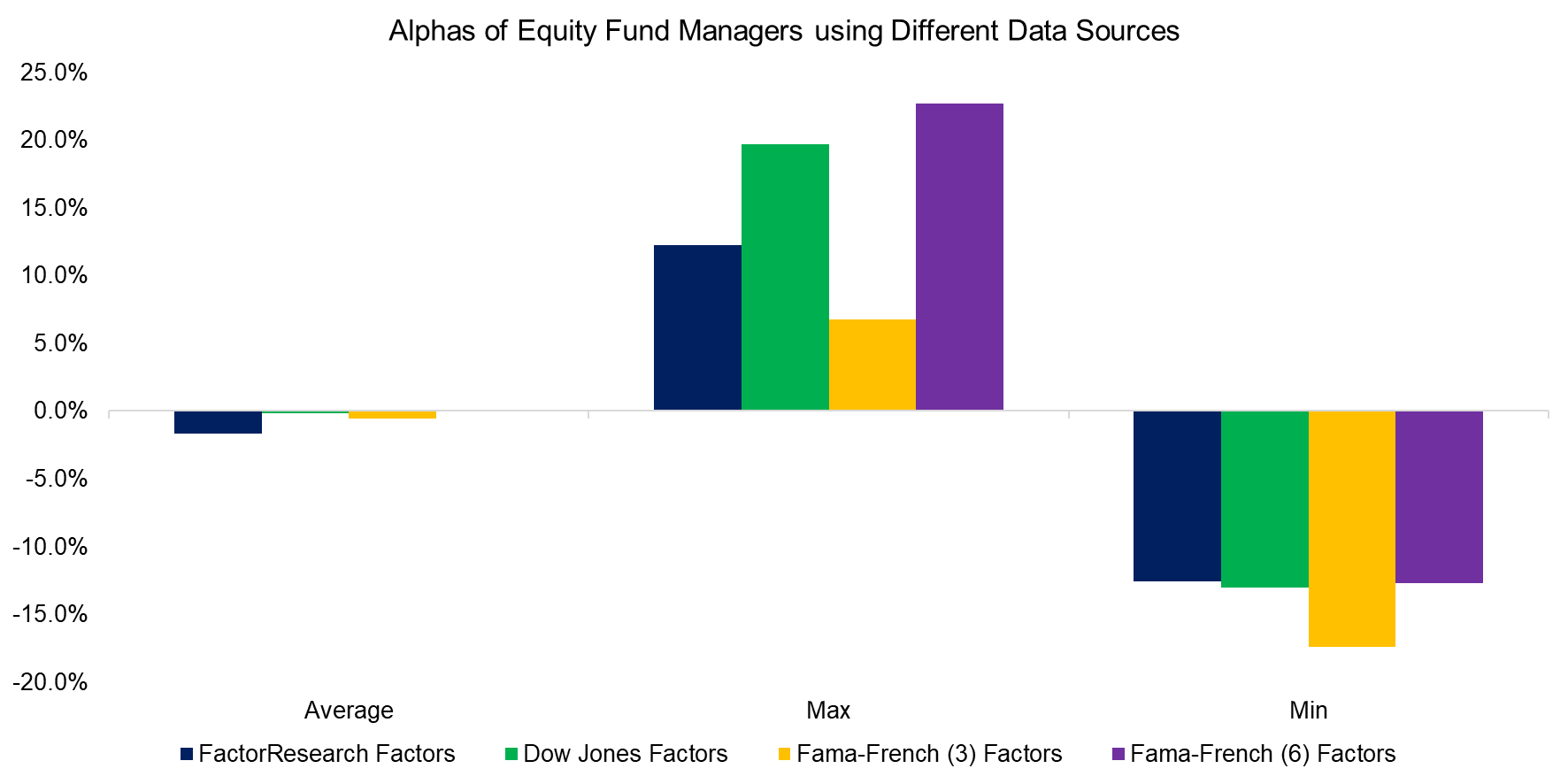
Source: FactorResearch
FURTHER THOUGHTS
Capital allocators have more and more data and better technology to inform their allocation decisions. But the same is true for fund managers.
This evolution has made markets more efficient and outperformance more difficult to achieve. Even in emerging markets or private markets like private equity, manager returns over the last decade indicate little in the way of value creation and nothing in the way of consistency.
Given this, it raises the question of whether it’s worth measuring alpha at all.
RELATED RESEARCH
Less Efficient Markets = Higher Alpha?
Smart Beta vs Alpha + Beta
Factor Exposure Analysis 103: Exploring Residualization
Factor Exposure Analysis 102: More or Less Independent Variables?
Time Machines for Investors
ABOUT THE AUTHOR
Nicolas Rabener is the CEO & Founder of Finominal, which empowers professional investors with data, technology, and research insights to improve their investment outcomes. Previously he created Jackdaw Capital, an award-winning quantitative hedge fund. Before that Nicolas worked at GIC and Citigroup in London and New York. Nicolas holds a Master of Finance from HHL Leipzig Graduate School of Management, is a CAIA charter holder, and enjoys endurance sports (Ironman & 100km Ultramarathon).
Connect with me on LinkedIn or X.

